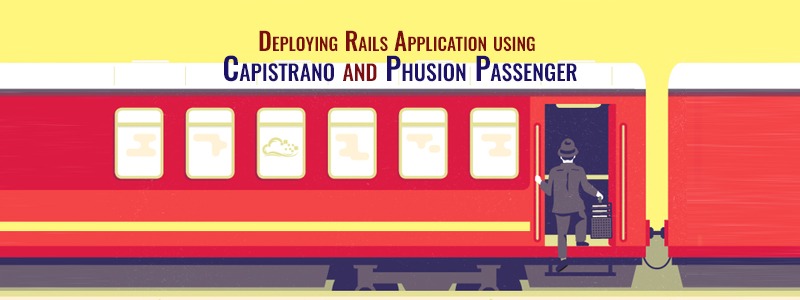Ruby offers a wide range of frameworks, but Sinatra stands out as a lightweight, flexible option for developers seeking simplicity and efficiency. Here, we explore the key benefits of using the Sinatra Ruby framework and why it continues to gain popularity among developers.
1. Lightweight and Minimalist Design
Sinatra’s minimalistic nature is its defining feature. Unlike full-stack frameworks like Ruby on Rails, Sinatra focuses solely on delivering the essentials for building web applications. This makes it an excellent choice for:
- Small to medium-sized projects.
- Prototyping and proof-of-concept applications.
- Developers who want to avoid the complexity of larger frameworks.
With Sinatra, you can start coding immediately without the need for extensive configuration.
2. Easy to Learn and Use
Sinatra is known for its intuitive syntax and straightforward setup. Developers with a basic understanding of Ruby can quickly grasp Sinatra’s routing system and build functional web applications. Creating a simple app involves just a few lines of code:
# app.rb
require 'sinatra'
get '/' do
"Hello, World!"
fin
# To run the app, execute `ruby app.rb` and visit `http://localhost:4567` in your browser.
This simplicity reduces the learning curve and makes it easier for beginners to start their web development journey.
3. Flexibility Without Overhead
Unlike opinionated frameworks that enforce specific patterns or structures, Sinatra gives developers the freedom to design their applications their way. This flexibility is particularly useful for:
- Customizing project architecture.
- Integrating with other libraries or frameworks.
- Adding only the necessary components, reducing bloat.
Example: Adding a Dynamic Route
require 'sinatra'
get '/hello/:name' do
"Hello, #{params[:name]}!"
fin
# Access this route by visiting `http://localhost:4567/hello/YourName`.
4. Efficient for Building APIs and Microservices
Sinatra’s lightweight nature makes it ideal for building APIs and microservices. It handles HTTP requests and responses efficiently, allowing developers to create RESTful APIs with ease. Popular use cases include:
- Backend services for mobile or web applications.
- Connecting various systems in a microservices architecture.
- Lightweight API gateways.
Example: Creating a JSON API
require 'sinatra' require 'json' get '/api/data' do
content_type :json
{ message: "Welcome to the API", status: 200 }.to_json
fin
# Visit `http://localhost:4567/api/data` to see the JSON response.
5. Active Community and Rich Ecosystem
Despite being lightweight, Sinatra benefits from Ruby’s rich ecosystem of libraries and gems. Developers can enhance their applications with tools like:
- sinatra-contrib for additional features like templates and logging.
- rack middleware for extending functionality.
- Active Record or Sequel for database integration.
Example: Using ERB Templates
require 'sinatra'
get '/' do
erb :index
fin
# Create a file named `views/index.erb` with the following content:
# <h1>Welcome to Sinatra</h1>
# <p>This is a simple example using ERB templates.</p>
# Run the app and visit `http://localhost:4567`.
6. Faster Prototyping
When speed is critical, Sinatra’s simplicity shines. Developers can quickly set up a project, implement core features, and iterate without the overhead of configuring a full-stack framework. This speed is particularly beneficial for:
- Startups testing ideas.
- Hackathons and coding challenges.
- Rapid iterations during the development cycle.
7. Perfect for Small and Modular Projects
Sinatra excels in scenarios where simplicity and modularity are key. Developers can use Sinatra to:
- Build standalone components or services.
- Create lightweight admin panels or dashboards.
- Develop plugins or integrations for larger systems.
Example: Handling Forms
require 'sinatra'
get '/form' do
erb :form
end
post '/submit' do
"You entered: #{params[:input]}"
fin
# Create a file named `views/form.erb` with the following content:
# <form action="/submit" method="post">
# <label for="input">Enter something:</label>
# <input type="text" name="input" id="input">
# <button type="submit">Submit</button>
# </form>
# Visit `http://localhost:4567/form` to try it out.
Conclusión
Sinatra’s lightweight design, flexibility, and ease of use make it a valuable tool for developers. Whether you’re building a small web application, a RESTful API, or a prototype, Sinatra offers the tools you need without unnecessary complexity. By leveraging its minimalist framework, developers can focus on writing clean, efficient code that meets their project’s specific requirements. If you’re looking to hire experienced Ruby developers to bring your project to life, RailsCarma is your trusted partner. With a team of seasoned Ruby experts, RailsCarma provides tailored solutions to meet your web development needs. From building scalable applications to creating efficient APIs, RielesCarma ensures your project’s success with their expertise in both Sinatra and Ruby on Rails frameworks.





